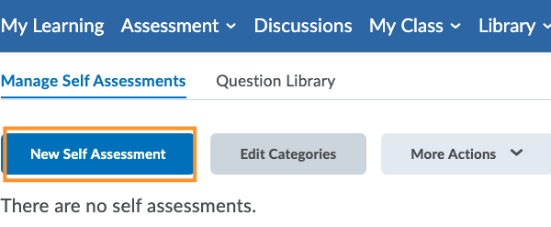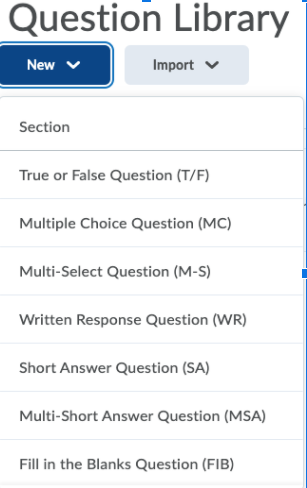Self Assessment Tool
The self-assessment tool is a formative assessment tool designed to develop assessment literacy. It enables lecturers to provide students with a series of questions that can help students effectively review the quality of their own work and improve their assignment before final submission.
Self-assessment is not summatively graded. This feature is designed to support reflective learning and enhance student comprehension of lecturer expectations and standards of quality.
Lecturers may observe that some students struggle to comprehend what is expected of them in a particular assignment or may find it difficult to understand what constitutes good quality work.
This feature offers an opportunity for student-generated formative feedback on a specific assignment. This is a form of feedforward, which may be built-in to an assessment strategy to enable students to assess whether they have met the criteria for an assignment before final submission.
In order to be able to do this effectively, students need resources such as clear assessment criteria and/or rubrics to help clarify expectations and standards of good quality. Encouraging students to mark sample assignments using the criteria and rubrics and providing opportunities to share and discuss reasons for the mark can be an excellent way to support students to internalise standards of good quality.
How to use the self-assessment tool
There is no single way to use the self-assessment tool and it may be used in a variety of ways. It is important to reflect on what you need from it in your own teaching context. For example, if your students struggle to understand what is expected in essay-based assessment, the tool can be very useful. The tool is available via the module tools, self assessments and then you have the option to create a new self assessment (as shown).

It can be tailored to the type of assessment method that you are using in your module and includes MCQs, short-answer questions, written-response questions and so on (as shown).

You may provide a series of questions for students to reflect upon and consider prior to the submission of their work. In addition to questions related to content or subject-matter, they may also be constructed to prompt reflection on the structure of the assignment and the inclusion of particular features.
Questions may be used to support students to reflect on the expectations of a written essay-based assignment. One approach is to build questions based on your modules’ assessment criteria which can be used as a check-list for students to review their work to ensure key elements have been included prior to final submission. The use of Multiple Choice Questions (MCQs) can also support students’ learning by enabling them to formatively assess if they have acquired sufficient subject-matter knowledge prior to summative assessment.
The following video is a step-by-step guide that illustrates how you might use the Brightspace self-assessment tool in your own teaching practice: Self Assessment - Create a Self Assessment - Instructor
Practical Tip
In order to maximise the benefits of the self-assessment tool, lecturers should provide resources such as clear assessment criteria and rubrics in order to clarify expectations of quality. Encouraging students to mark sample assignments using the criteria and rubrics and providing opportunities for discussion of how they decided on a mark can help students better understand what is expected of them and better evaluate the quality of their own work.